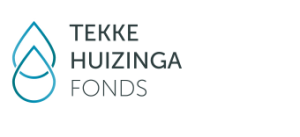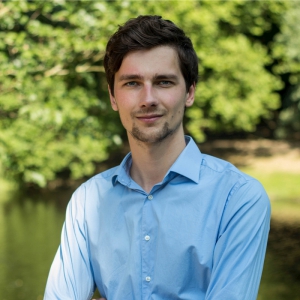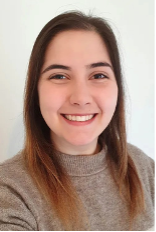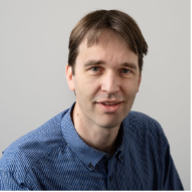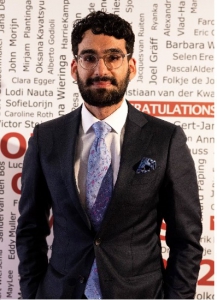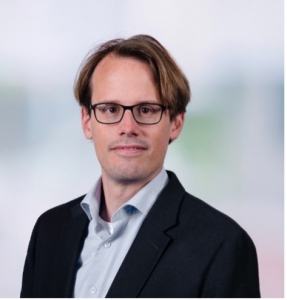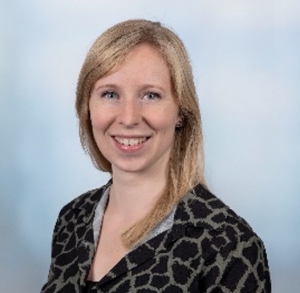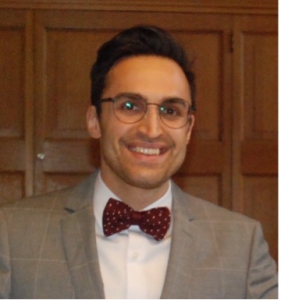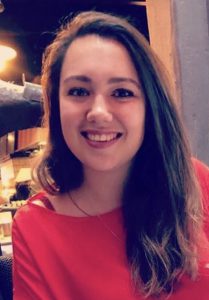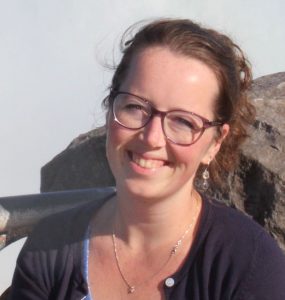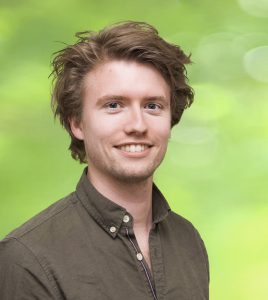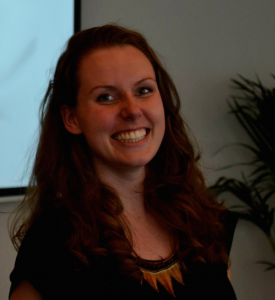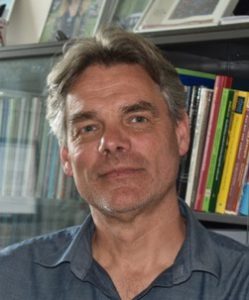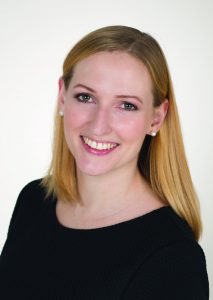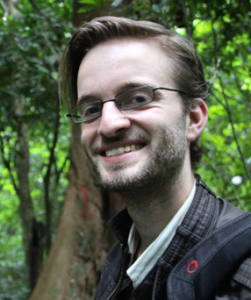Onderzoek
Onderzoek is een belangrijk onderdeel van het fonds. Vanuit de historie richtte Tekke Huizinga samen met Professor Kolff de eerste bloedbank van het Academisch Ziekenhuis op. Huizinga en Kolff waren echte pioniers op hun werkgebied.
Deze pioniersgedachte ligt ook ten grondslag aan de doelstellingen van het Tekke Huizinga Fonds, een bijdrage leveren aan vernieuwende ideeën of een eerste verkennende uitwerking daarvan binnen de aangegeven onderzoeksgebieden Transplantatie geneeskunde, Regeneratieve geneeskunde en Hematopoëse inclusief Transfusie geneeskunde.
De afgelopen jaren zijn een groot aantal onderzoekingen toegekend binnen de vastgestelde onderzoeksgebieden. Een overzicht hiervan wordt hieronder weergegeven.
Transplantation of parathyroid gland-derived organoids in rats for regeneration of parathyroid function after surgical induction of hypoparathyroidism
H.Schouw
Jaar: 2023
The parathyroid glands are small structures of several millimeters in size that are closely related to the thyroid gland and are responsible for calcium homeostasis in the blood. Surgery in relation to parathyroid and thyroid disease may cause damage to the parathyroid gland resulting in hypoparathyroidism. This requires temporary or permanent treatment with medication that can be challenging to dose. This is where the concept of regenerative medicine might provide a solution in the form of previously cultured parathyroid organoids which produce parathyroid hormone and already mimic a parathyroid gland in-vitro. This project aims to assess and investigate the in-vivo parathyroid hormone producing potential of these parathyroid organoids by transplanting them in rats that have their parathyroid glands surgically removed. This could be a big step towards clinical implementation of the use of parathyroid organoids in the treatment of surgically induced hypoparathyroidism.
Repairing fibrotic discarded human donor kidneys with Galunisertib
C.Campos Pamplona
Jaar: 2023
One of the biggest hurdles in renal transplantation is the shorter long-term survival of deceased donor kidneys in comparison to living donors. Graft failure is usually a consequence of a gradual decline in kidney function due to increased interstitial fibrosis and tubular atrophy, in which functional units slowly become replaced by scar tissue. Therefore, identifying early onset fibrosis pre-transplant and inhibiting the chronic activation of its signaling cascade would be of great value in the transplant setting. Renal ex vivo normothermic perfusion (NMP) is a technique that provides us with the opportunity to add therapies to an isolated yet functioning organ before transplanting it into the recipient. Our group has previously conducted a trial in which porcine kidneys were treated with an anti-fibrotic agent (Galunisertib) during NMP, and it showed positive results even after 48 hours of administration in a subsequent tissue slice model. Our next step aims to translate these results to a discarded post-mortem human kidneys model.
Improved recognition of cellular rejection in biopsies of transplanted organs
A.Diepstra
Jaar: 2023
Acute cellular rejection of a transplanted organ is a serious event that can result in graft loss. In most cases, a biopsy of the organ is needed for diagnosis, however this does not always provide a clear answer. There can be many types of immune cells in graft biopsies, and those responsible for rejection are difficult to distinguish from other immune cells with conventional methods. This study aims to visualize the immune cells that cause rejection. We have identified a novel transcription factor called TOX, that is expressed in T cells that have been strongly stimulated by antigen recognition. Immunohistochemistry for this protein in the transplant setting has not been done yet, but our preliminary data indicate that TOX staining specifically highlights rejecting cytotoxic T cells. TOX immunohistochemistry will be applied to kidney explants lost to rejection, kidney biopsies with different forms and severity of rejection and biopsies of the heart, lungs, liver, and small intestine. We expect that TOX immunohistochemistry will improve the recognition of rejection.
The influence of bile salt transporter genetic variants and microbiome alterations on the development of non-anastomotic biliary strictures after a liver transplantation
L.Nieuwenhuis
Jaar: 2022
.
Clonal hematopoiesis and engraftment after autologous stem cell transplantation
C.Hazenberg
Jaar: 2022
.
Protein detection using CRISPR-Cas: Modular Antibody-Dependent Catalytic Reporter of Faintly-Expressed Targets(MYCROFT).
Mr. S. Eskandari
Jaar: 2022
MYCROFT is a novel diagnostic platform designed to detect discrete protein concentrations associated with allograft dysfunction in the serum and urine of transplant recipients. Specifically, it attunes clustered regularly interspaced short palindromic repeats (CRISPR) and proximity ligation assay (PLA) diagnostics to inform the likelihood of transplant rejection, thereby aiding clinicians in knowing when to perform kidney biopsies. If proven successful, MYCROFT can easily be tweaked for applications beyond the transplant community due to its modular design and detect a broad range of pathological protein signatures—notably, without sacrificing speed, efficiency, or cost-effectiveness.
The effects of hemofiltration in ex vivo lung perfusion using abattoir sheep lungs.
Mr. M. Hu, Bsc
Jaar: 2021
Ex Vivo Lung Perfusion (EVLP) has proven to be an excellent technique to increase the scarce supply of donor lungs. With this technique, donor lungs can be assessed and reconditioned before transplantation. To further optimize EVLP and its outcomes, we strive to reduce the damaging effects of ischemia reperfusion injury (IRI). IRI can induce pro-inflammatory cytokines which are a major contributing factor in primary graft dysfunction (PGD). Moreover, PGD has a strong negative correlation with recipient survival. We aim to remove pro-inflammatory cytokines during EVLP with hemofiltration.
Additionally, these hemofilters can remove electrolytes. We will continuously replenish electrolytes and nutrients to maintain a constant osmotic pressure and quality of the perfusion fluid. This is contrary to the current clinical standard in which the perfusion fluid is renewed periodically. For this study, we will use our self-developed abattoir EVLP model, using ovine lungs after circulatory death (DCD).
The impact of iron definiciency on B-lymphocytes in kidney transplantant recipients
Mr. M. de Borst, MD PhD
Jaar: 2021
Iron is essential for many cellular processes. Emerging data showed that iron deficiency (ID) impairs proliferation and function of B-lymphocytes in mice (Jiang, Nat Commun 2019). Both impaired B-cell function and ID are common in kidney transplant recipients (KTRs). In this project, we will study whether ID also affects B-lymphocyte proliferation and function in humans, and whether iron repletion corrects these abnormalities. This will be addressed in a sub-study from an ongoing randomized controlled trial comparing intravenous iron (iron(III)-carboxymaltose) with placebo in KTRs with ID. Non-iron-deficient KTRs will also be studied as controls. Secondly, we will use RNA sequencing to assess changes in gene expression in B-lymphocytes from iron-sufficient KTRs and in iron-deficient KTRs before and after iron supplementation. Together, these studies will provide key insights in the role of ID in B-cell immunity in KTRs, and pinpoint underlying mechanisms, with the potential to yield clinically relevant outcomes.
The effect of disease modifying treatment on the risk if alloimmunization in transfused patients with myelodysplastic syndromes: database expansion and meta-analysis.
Ms. H. Rozema, MSc
Jaar: 2020
Patients with myelodysplastic syndromes (MDS) often become transfusion dependent during the course of their disease. Different adverse events can occur as a result of (frequent) blood transfusions ranging from iron overload to immunization against blood group antigens. Alloimmunization is an adverse event and results in time-consuming red blood cell (RBC) compatibility testing, increased donor selection pressure on the blood banks, and increased risk of acute hemolytic transfusion reactions in emergency situations (when matching of blood products for patient antibodies is not feasible). Current literature has not yet identified the influence of disease modifying treatment (DMT) on the risk of alloimmunization. It is hypothesized that DMT affects the ability of the immune system to mount an antibody response to non-self blood group antigens.
Cell free tumor DNA detection in patients with suspicion of post-transplant lymphoprofilerative disorder after lung transplantation
Mr. F. Montes de Jesus, MD
Jaar: 2020
One of the most dire complications of lung transplantation is the development PTLD. Currently, pre-emptive treatment may be initiated based on EBV DNA load. A considerable limitation to this approach is the lack of standardized cutoff values, monitoring time points and sampling source. Another possible approach to monitor PTLD is through a diagnostic FDG-PET/CT, however the detection threshold does not allow for accurate detection of early stage disease. Molecular analysis of cell free DNA in plasma is a novel method that allows for the detection of mutations from circulating tumor (ct)DNA. This multidisciplinary study assesses the additional value of ctDNA monitoring in lung transplant patients with the goal of identifying patients at an early stage of developing PTLD who may benefit from (pre-emptive) rituximab treatment.
Oxygenated renal flush-out of porcine kidneys
Mr. H. Maassen, BSc
Jaar: 2020
xxxx
Development of microthrombi in kidney preservation and transplantation – the new kid on the block?
Ms. T. van den Berg, BSc
Jaar: 2019
The occurrence of microthrombi can potentially lead to local perfusion disorders and subsequently to deterioration of kidney graft function. We hypothesize that microthrombi are more frequent than we might expect, due to known activation of haemostatic pathways in deceased donors, the ischemia/reperfusion injury that occurs during the transplant surgery and enhanced kidney function after thrombolytic therapy. The aim of this study is to investigate how often these microthrombi occur, which consequences they bear and whether type of preservation influences their development and hemostatic processes.
Neonatal anemia and red blood cell transfusions
Ms. W. Kalteren, BSc
Jaar: 2019
This project addresses the benefits and risks of the RBC transfusion in neonatal anemia in preterm born infants. The lack of knowledge on the balance of potential benefits and risk of RBC transfusion for anemic preterm infants, have led to controversies about the optimal indication for RBC transfusion for this population. Therefore, the overall aim of this research project is to clarify controversial issues regarding neonatal anemia and RBC transfusion. First, we intend to assess the feasibility of using a lower than conventional transfusion Hb-threshold combined with the degree of oxygen saturation of the brain. Second, we intend to increase knowledge of the association between anemia and epo gene expression and on the direct biochemical and functional effects of RBC transfusion in preterm infants regarding organ oxygenation, clinical factors, intestinal hypoxic cell damage, oxidative stress, and neurodevelopment.
Effects of prohemostatic interventions on hemostatic status of patients with liver disease in a clinical setting
Mrs. F. von Meijenfeldt, BSc
Jaar: 2019
Lipidomic and proteomic analysis of potentially transplantable lungs undergoing ex vivo lung perfusion (EVLP)
Dr. Ing. R. Hoffmann
Jaar: 2018
3DA treatment as a possible enhancer of hematopoietic stem cell function.
Ms. S. Buisman, BSc
Jaar: 2018
Hematopoietic stem cell transplantation is established as a treatment for a broad range of hematological diseases. However, suboptimal engraftment levels and low availability of hematopoietic stem cells (HSCs) limit the use. This highlights the importance of finding ways to maintain and expand the available HSCs and enhance their engraftment potential. In this project we test 3-DEAZAADENOSINE (3DA) as a candidate drug for preventing/blunting senescence. Preliminary in vitro data showed that 3DA treated cord blood CD34+ cells maintained more primitive. The Tekke Huizinga grant enabled us to further investigate whether in vitro 3DA treatment is able to enhance in vivo human HSC capacity.
Resuscitation of discarded donor human hearts on subnormothermic ex-situ machine perfusion with an acellular perfusate
Mr. V. van Suylen
Jaar: 2018
Currently, there is no clinical practice of donation after circulatory death (DCD) heart transplantation in the Netherlands. In addition, certain donation after brain death (DBD) hearts are not transplanted due to the existing strict selection criteria. This study will develop a preservation technique for discarded human donor hearts. It will focus on the effect of subnormothermic acellular machine perfusion on the inflammatory and oxidative status, energy storage capacity, and restoration of function of donor hearts currently deemed unsuitable for transplantation. To study the effect of this preservation technique, we will evaluate these hearts using a normothermic ex-situ heart perfusion machine. The advantage of this machine is its ability to assess the function of the hearts as well as biochemical parameters.
Clinical validation of the analysis of Everolimus, Sirolimus, and Mycophenolate Mofetil in Dried Blood Spots
Prof.dr. D. Touw
Jaar: 2017
Towards rational hemostatic management of critically ill patients with liver disease
Prof.dr. J.A. Lisman
Jaar: 2017
Liver disease is associated with complex changes in the hemostatic system. Although routine indices of hemostasis such as the platelet count and prothrombin time suggest a bleeding tendency, these patients are in fact in hemostatic balance due to a simultaneous decline in pro- and anticoagulant drivers. Whether this rebalanced hemostatic state remains when patients with liver disease become critically ill is unknown and subject of this proposal. Knowledge on the hemostatic status of critically ill patients with liver disease is vital for a rational approach to hemostatic management.
Is poor stem cell mobilization related to the emergence of clonal haematopoiesis in the bone marrow compartment?
Ms. I. van Zeventer, BSc, BA
Jaar: 2017
Some patients fail to mobilize sufficient numbers of CD34+ peripheral blood stem cells upon mobilization procedures for autologous hematopoietic cell transplantation. It is now known that clonal haematopoiesis might emerge during ageing and following chemotherapeutic treatment, implying a risk for development of myeloid neoplasms. We aim to study the presence of clonal haematopoiesis in poor mobilizers by a targeted sequencing approach and to relate the mutational profile to clinical outcomes and development of secondary haematological malignancies. Results from this study may contribute to improved and personalized treatment protocols.
Adult stem cells of the human thyroid gland; expansion and functionality
Prof.dr. R.P. Coppes
Jaar: 2016
Insufficient levels of thyroid hormone due to cancer treatment related thyroidectomy may lead to fatigue, feeling cold, constipation, and weight increase; whereas high levels may lead to cardiovascular diseases or osteoporosis. In this project we developed a culture protocol for murine and human thyroid stem cell derived tissue resembling organoids. When xeno-transplanted into athyroid mice, these organoids form functional hormone producing thyroid follicles. This opens future therapeutic possibilities for tissue stem cell-based therapies for thyroid cancer patients suffering from hypothyroidism.
This project was a collaboration with Andries Groen, Prof. dr. John Plukker, Dr. Schelto Kruijff (all Surgical Oncology) and Prof. Thera Links (Endocrinology).
Dissecting the epigenetic events that contribute to hematopoietic stem cell expansion
Ms. K. Mattes
Jaar: 2016
Leukemia stem cells play a crucial role in disease initiation and progression of acute myeloid leukemia (AML). We identified that altered expression of the transcriptional regulators CITED2 and PU.1 impacts the survival and maintenance of both normal- and leukemia stem cells. With support of “Tekke Huizingafonds” we investigated potential molecular mechanisms underlying this observation. Understanding the mechanisms that regulate stem cell self-renewal and survival can help to improve current protocols for hematopoietic stem cell transplantation or highlight opportunities for AML therapy.
Hibernation as key to unlock platelet cold storage
Mr. E.L. de Vrij
Jaar: 2016
Long term cold storage of human platelets for transfusion is not yet possible due to detrimental effects of low temperature on platelets causing rapid clearance after transfusion. Studies on platelets in hibernating animals do not show these detrimental effects of temperature, despite cycling through extreme temperatures. In this project we assessed the effects of temperature on platelet function in mice mimicking ‘daily hibernation’ and by using intravital microscopy analysis. Studying hibernators and their protective mechanisms against cold may unlock platelet cold storage for non-hibernating mammals.
The hemostatic status of critically ill patients with liver disease
Prof.dr. J.A. Lisman
Jaar: 2015
Towards ex vivo normothermic machine perfusion of human donor livers without the requirement for human blood products
Ms. A. Matton
Jaar: 2015
Multipotent donor lung therapy with mesenchymal stem cells in an ex vivo lung perfusion model using lungs from brain dead donorrats
Dr. M.E. Erasmus – UMCG
Jaar: 2014
Brain death and ischemia cause inflammatory and mitochondrial injury to donor lungs. In our project we stabilized the damaging process by giving stem cells during ex situ perfusion and ventilation of rat donor lungs pre-transplant. Multiple smaller doses were most efficient.
Understanding erythropoiesis from (expanded) hematopoietic stem cells through modulation of CITED2
Dr. H. Schepers – UMCG
Jaar: 2014
With this proposal we will investigate the cellular and molecular mechanisms that the transcriptional regulator CITED2 uses in order to expand HSC numbers. We will furthermore gain a deeper understanding how CITED2 increases the overall erythroid output from these cells.
Organ preservation with hydrogensulfide in renal transplantation
Prof. dr. H. van Goor – UMCG
Jaar: 2014
Hydrogen sulfide has protective properties during ischemia. It can hypometabolize cells and tissues comparable to cooling down. We currently uss this concept to protect transplant organs in the phases prior to transplantation.
Dissecting the architecture of the normal and leukemic ‘stem cell niche’
Drs. C.L.E. Hazenberg – UMCG
Jaar: 2013
In this research proposal, we study the changes in the bone marrow microenvironment of patients after autologous stem cell transplantation. By understanding the changes in the cellular compartments and the molecular pathways involved, we aim to improve future transplantation strategies and post-transplantational care, in order to improve patients’ outcomes.
Efficacy of pro- and antihemostatic drugs in plasma from patients with liver disease
Prof. dr. J.A. Lisman – UMCG
Jaar: 2013
This study has shown tremendous alterations in the anticoagulant effect of widely used drugs in plasma from patients with cirrhosis as compared to individuals with intact liver function (PLoS One. 2014 Feb 4;9(2):e88390). Our data may have important implications for dosing anticoagulant drugs in patients with cirrhosis.
Pilotstudie ‘normotherme machinepreservatie van humane donorlevers’
Dr. S. op den Dries – UMCG
Jaar: 2012
A prospective cohort piloty study for use of cryolijm-sq in patients with severe COPD
Dr. M. Tiekstra-Dijkstra – UMCG
Jaar: 2012
Detection of ischemia/reperfusion injury in human tissue: Anti-aggregatory and anti-inflammatory ectoenzymes in vascular endothelium.
Dr. F. Spaans – UMCG
Jaar: 2012
Bone marrow derived endothelial progenitor cell transplantation to ameliorate radiation-induced vascular remodelling in the lung
Prof. dr. R.P. Coppes – UMCG
Jaar: 2011
Exploiting possibilities to improve the long-term engrafment of the hematopoietic stem cell compartment following autologous stem cell transplantation
Dr. E. Vellenga- UMCG
Jaar: 2010
Transfusion policy in patients with complex changes of hemostatis – a rebalanced hemostatic status in patients with acute liver failure
Prof. Dr. J.A. Lisman – UMCG
Jaar: 2010
Transfusion as supportive care, study for improvement of quality of life
Dr. J. Slomp – MST, Enschede
Jaar: 2009
Will reinfusion of autologous stem cell products, independent of the composition of the transplant, directly in the bone marrow compartment improve steady state hematopoiesis post-transplantation?
Prof. Dr. E. Vellenga – UMCG
Jaar: 2008
The PLATO study disfunctionerende plaatjes bij lever transplantaties en preserverende werking van aprotinine
Prof. Dr. R.J. Porte – UMCG
Jaar: 2007
Meer informatie over aanvragen?
Onderzoeksvoorstellen kun je inleveren op het aanvraagvraag formulier ( zie knop aanvragen).
